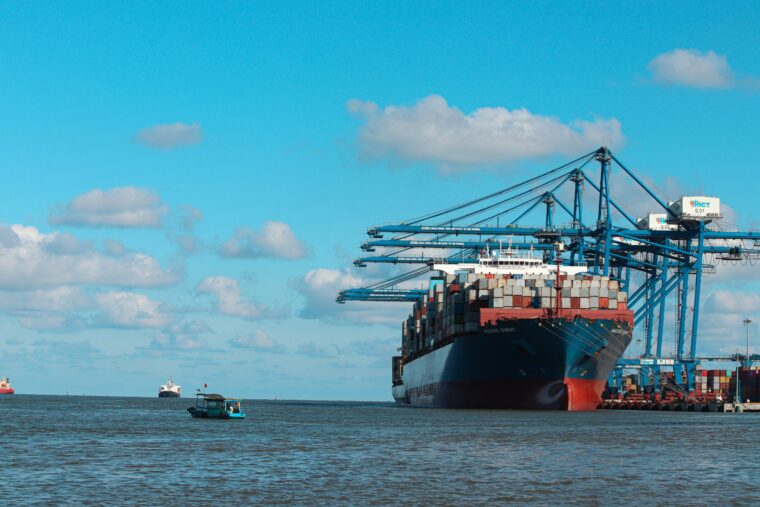
Ports around the country will implement new, innovative hydrogen-based zero-emissions equipment, infrastructure and technologies thanks to a surge of federal support from the U.S. Environmental Protection Agency (EPA).
The EPA is announcing nearly $3 billion in grants from the Clean Ports Program to fund zero-emissions port equipment and infrastructure, reduce greenhouse gas and diesel pollution, and ensure environmental justice in port and freight operations.
As part of this announcement, this round of Clean Ports Program grants will support six port authorities that will look to expand hydrogen-based equipment usage and hydrogen technology development.
Hydrogen-based zero-emissions technologies utilize hydrogen as a clean energy source, producing only water vapor as a byproduct during operation. This innovative equipment, such as hydrogen fuel cells and electrolyzers, plays a crucial role in transitioning to a sustainable energy system, as it can power vehicles, industrial processes and power generation without releasing greenhouse gases.
Developing usage in these technologies, the six port projects awarded under this round will engage in several hydrogen-based initiatives to reduce reliance on fossil fuels. This Clean Ports funding will support projects that conduct environmental studies, purchase hydrogen-fueled vehicles, install hydrogen fueling stations, develop workforce and pre-apprenticeship training and, inevitably, reduce greenhouse gas emissions across the nation. 
The port authority awarded the largest grant, $322.1 million, to the Port Department of the City of Oakland (Port of Oakland). Utilizing these funds, the Port of Oakland anticipates fast tracking Oakland Seaport’s transition to 100% zero-emission cargo handling operations. This comprehensive project would include the purchase of 482 zero-emissions drayage trucks, 179 yard tractors, 33 front end loaders, 59 forklifts, one rail car mover and hundreds of additional zero-emissions cargo handling equipment.
Developed in collaboration with several community, workforce development, industry, technical and public agency partners, Oakland Seaport’s estimated $620 million project will further the diverse coalitions’ community engagement, environmental justice, workforce development and technical expertise initiatives. This will include the collective creation of a 4-year truck loaner program, skills and safety training, air quality monitoring and the development of pre-apprentice training programs.
Another port project, led by the Illinois Environmental Protection Agency (IEPA), will secure $95 million in grants from the Clean Ports Program to reduce greenhouse gas emissions’ impact on disadvantaged communities. Encompassing several Illinois ports, the statewide project looks to mitigate environmental damage, build community engagement, further workforce development and create good-paying Illinois jobs.
To achieve this, Illinois’ ports project will scrap existing diesel equipment to reduce the number of polluting vehicles at ports and will purchase and install solar generation and battery storage systems to support large electrification loads. Additionally, IEPA will utilize a Climate and Air Quality Planning grant to develop an emissions inventory and set emissions reduction goals for thousands of port and terminal vehicles.
Hawaii’s Department of Transportation (HDOT) will be awarded a combined $59.2 million in grants from the program to implement an emissions baseline study and the purchase of various zero-emissions equipment and infrastructure. Primarily, Hawaii’s port project will purchase hydrogen-fueled tractors for the Sand Island Container Terminal and will construct a hydrogen fueling facility in Honolulu Harbor.
Utilizing a $2.5 million Clean Ports Program grant, HDOT will also fund an air emissions inventory baseline study to track ocean going vessels, harbor craft and cargo handling equipment across the state’s nine commercial ports. To be used as a benchmark to measure environmental progression, the completed study will include mitigation strategies and recommendations for emissions reduction goals and targets.
Over the coming months, the EPA will work with awardees to finalize project plans before moving into the implementation phase. The agency anticipates making grant awards in December, once all legal, statutory and administrative requirements are satisfied.
For more information on the federal port program, the six hydrogen-based port projects and project descriptions for all 55 selected applications, see the EPA’s Clean Ports Program webpage.
Photo by Nathan Cima on Unsplash
The post $475 million awarded to ports for expanding hydrogen-based zero-emissions technology appeared first on Government Market News.
